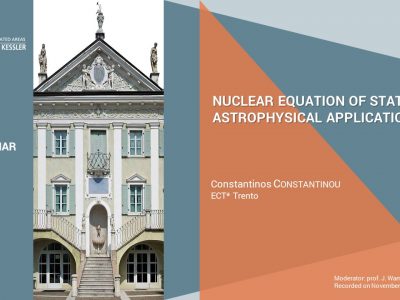Nuclear equation of state - Astrophysical applications

The equation of state (EOS) of hot and dense nuclear matter is necessary for the modeling of astrophysical systems. Its cold properties govern the structure of cold-catalyzed neutron stars and the pre-merger evolution of binary systems involving neutron stars. Its thermal part is relevant during- and post-merger, and in the hydrodynamic description of core-collapse supernovae. Furthermore, the EOS controls electron capture and neutrino emission rates and, therefore, it impacts the conditions for nucleosynthesis and the cooling of protoneutron stars. We discuss various phenomenological approaches employed in the construction of the EOS for use in simulations of the aforementioned phenomena. We briefly survey the constraints on the EOS from laboratory experiments and astrophysical observations, and then address supranuclear densities occupied by a uniform hadronic liquid. We explore this phase using both relativistic mean-field theories as well as nonrelativistic potential models and highlight the role of the nucleon effective mass in the determination of thermal effects in all regimes of degeneracy. Finally, we turn to the subnuclear regime where matter is a inhomogeneous mixture of nucleons, nuclei, and pasta-like structures.
